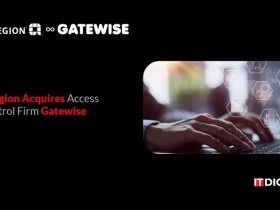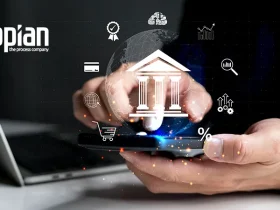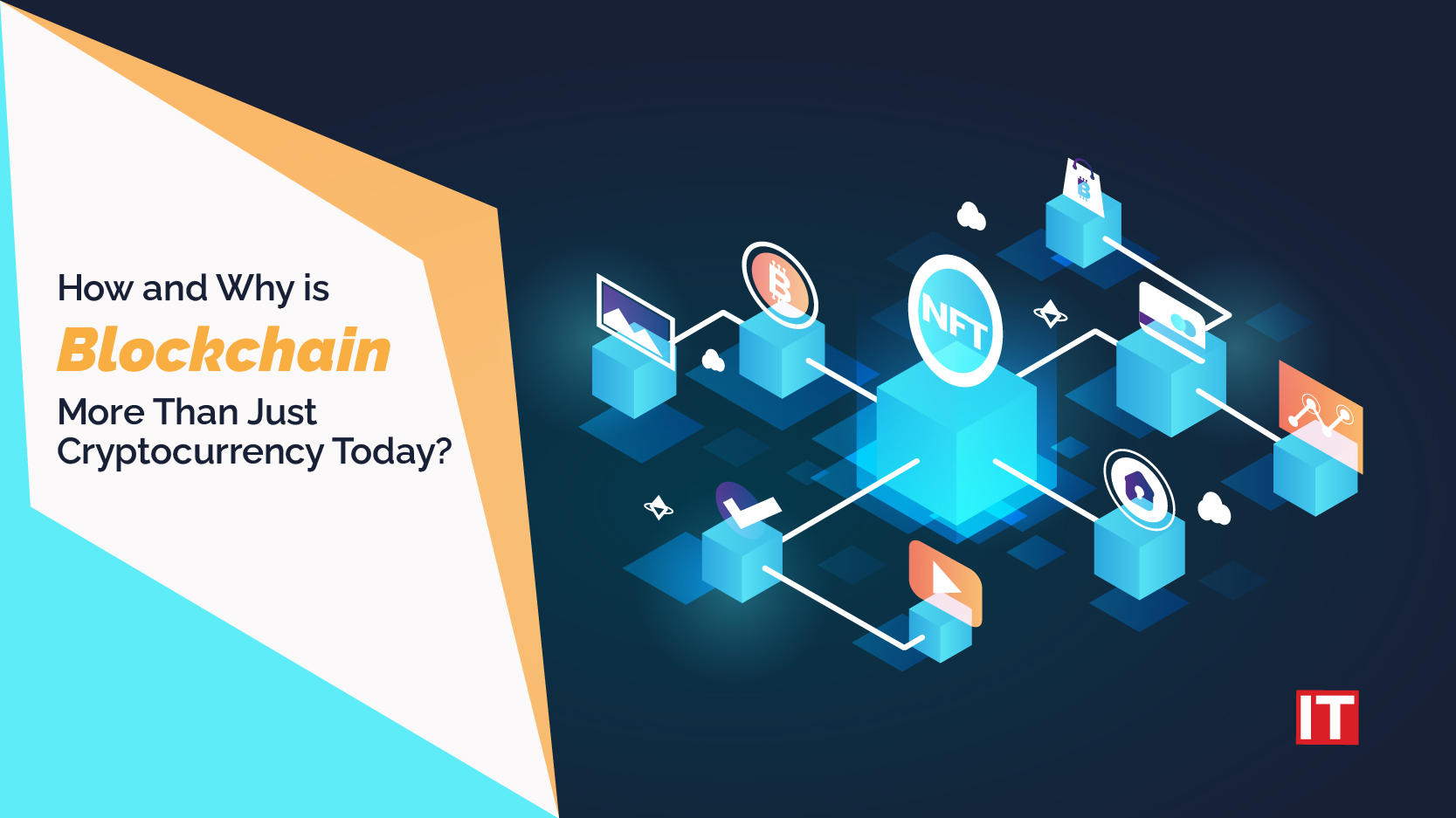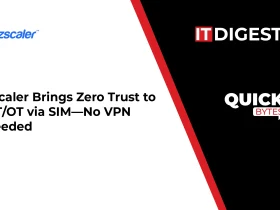Over 90% of banks in the US and Europe are currently looking into blockchain innovation!
Blockchain! The technology that intrigued the millennials, confounded the boomers, excited the Gen Z and created technological disruption..
If we look at the word ‘Blockchain,’ it prominently highlights two essential elements: ‘a block’ and ‘a chain.’ In layman’s terms, this blockchain is a close-knit infrastructure where data is stored in blocks connected to each other through cryptography.
The digital database created by blockchain facilitates the storage of transactions and contracts in interconnected blocks. Each block is timestamped, encrypted, and immutable. Also referred to as a Decentralized Distributed Ledger, it promotes the idea of decentralization where everyone gets a fair chance to own, interact, and grow without any interference from third parties.
Blockchain Ballyhoo Creating Disruptions
The blockchain functions as a distributed record-keeping system which means each person will make a copy of the records that utilizes cryptography, allowing for auditable transactions. Using blockchain, each transaction is traceable to the person. Each collection of transactions is verifiable, and this information on the blockchain cannot be edited without peer knowledge.
These blockchain features provide two or more parties sans trust to engage in honest transactions without relying on intermediaries or central agencies.
However, as scientists continued to delve deeper into the technology’s layers through research, they were able to uncover blockchain’s previously untapped potential to completely transform the ecosystems in which we work.
Today, blockchain technology is being used in a variety of commercial sectors, including banking, e-gaming, education, and healthcare. Blockchain is already making progress in virtually every industry. Blockchain is actually starting to shake up a lot of different businesses. Government, business, insurance, and personal identity security are just a few of the many industries that the technology can disrupt.
Are There Different Types of Blockchains?
While some of us are somewhat familiar with blockchain technology, others may still just think of cryptocurrency when they think of it. Let’s delve a little more into what blockchain technology is and the different types to help you grasp it better.
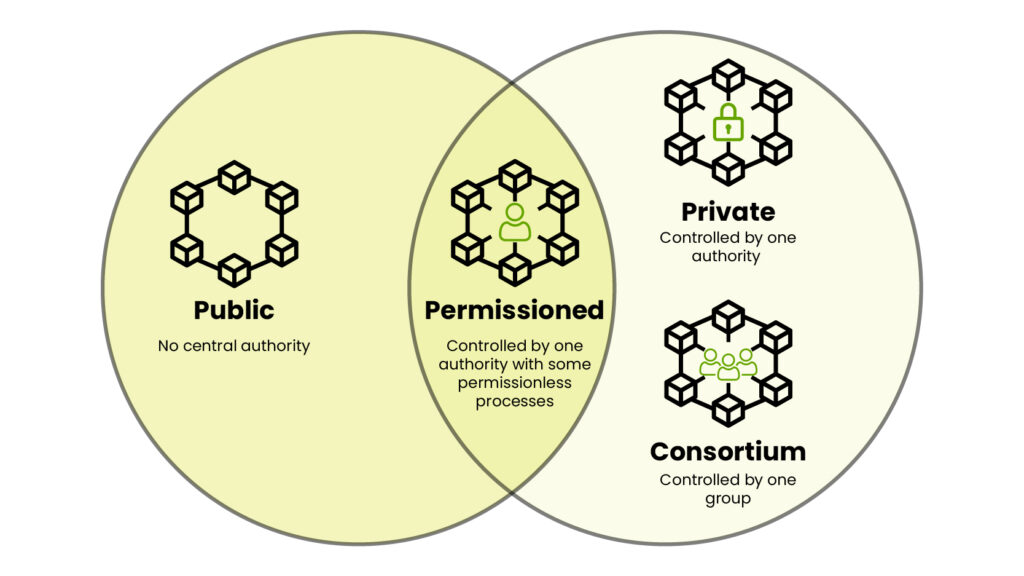
Public Networks
A public blockchain is one that allows anybody to join and take part in the fundamental processes of the blockchain network. The self-governed, decentralized aspect that is frequently praised when discussing blockchain is made possible by the fact that anybody may read, publish, and audit the current activities on a public blockchain network.
Private Networks
Blockchains that are private are not decentralized. It is a distributed ledger that functions as a closed database protected by cryptographic principles and the requirements of the organization. Nobody without authorization is allowed to operate a full node, conduct transactions, or validate or authenticate blockchain modifications.
Permissioned Networks
Permissioned blockchains are a combination of public and private blockchains that anyone can access as long as they have permission from the administrators to do so. Public blockchains are open to everyone, private blockchains are only accessible to a small number of users.
Also Read: Rapidly Gaining Edge Across Markets, Edge Computing Revolution at Forefront
Consortium Networks
A semi-decentralized network in which membership is not granted to single entities is known as a consortium blockchain. Instead, a collection of people, or “node,” receives it. Network security is provided in this network whereas public chains do not provide the same.
It is time to explore novel concepts and ideas whenever feasible now that the society is accustomed to the idea of blockchain technology and its potential ramifications. In this domain, there is no time to be stationary, thus developers keep on experimenting new innovative concepts.
Building Blocks of Blockchain – aka the Features
As we’ve already established, blockchain technology offers far more than serving as a cryptocurrency backup network. What are the main characteristics that make it so enticing, then?
Immutability
![]() Immutability is the quality of not being able to be altered or modified. One of the best aspects of the blockchain that ensures the technology will continue to function as a stable, unchangeable network is this capability.
Immutability is the quality of not being able to be altered or modified. One of the best aspects of the blockchain that ensures the technology will continue to function as a stable, unchangeable network is this capability.
Traditional banking systems don’t operate exactly how blockchain technology does. Instead of relying on centralized authorities, a network of nodes is used to ensure the blockchain’s functionality.
Each node in the system keeps a copy of the digital ledger. Before adding a transaction, each node must confirm its legitimacy. It is entered into the ledger if the majority believes it to be valid. As a result, transparency is promoted and becomes incorruptible.
Decentralized
![]() The network is decentralized, which means there isn’t a single individual in charge of running it or any governing body. The network is decentralized since it is maintained by a collection of nodes.
The network is decentralized, which means there isn’t a single individual in charge of running it or any governing body. The network is decentralized since it is maintained by a collection of nodes.
One of the most important aspects of blockchain technology that functions flawlessly is this. We may immediately access the system via the web and put our assets there because it doesn’t need any sort of regulating body.
You can store anything, including valuable digital assets, contracts, vital papers, and cryptocurrencies. And utilizing your private key and the blockchain, you’ll have full control over them.
Secure
![]() The blockchain’s records are all individually encrypted. The blockchain network’s entire process is made more secure by the use of encryption. It does not follow that because there is no centralized authority, anyone can just add, change, or delete material on the network.
The blockchain’s records are all individually encrypted. The blockchain network’s entire process is made more secure by the use of encryption. It does not follow that because there is no centralized authority, anyone can just add, change, or delete material on the network.
Each piece of information on the blockchain has a unique identity on the network thanks to cryptographic hashing. There is a unique hash for each block as well as a hash for the previous block.
To Conclude..
By the end of 2022, we will have already used blockchain technology to tokenize any kind of asset, safeguard personal information, and increase business performance and income. We’ll likely soon stop referring to blockchain as a brand-new, ground-breaking technology since it will be mainstream.








